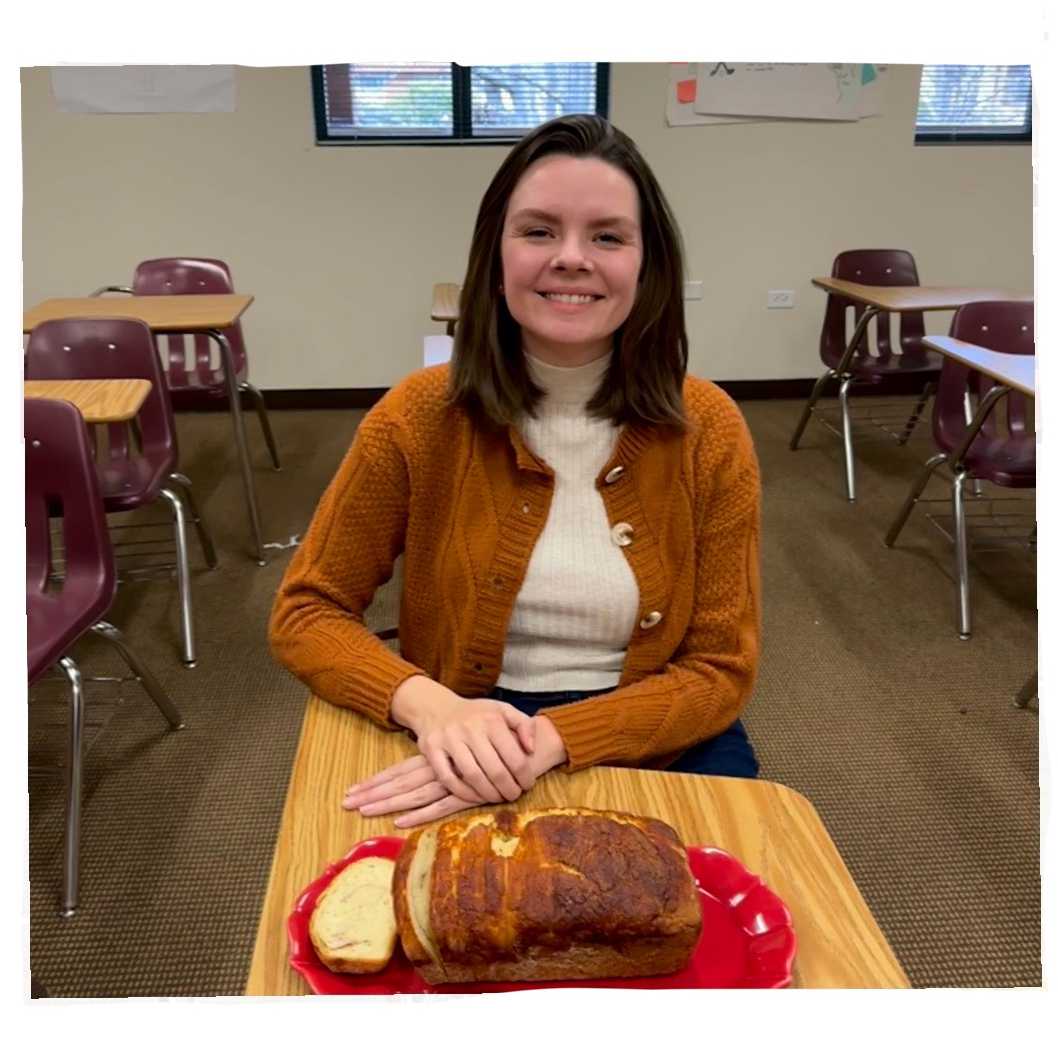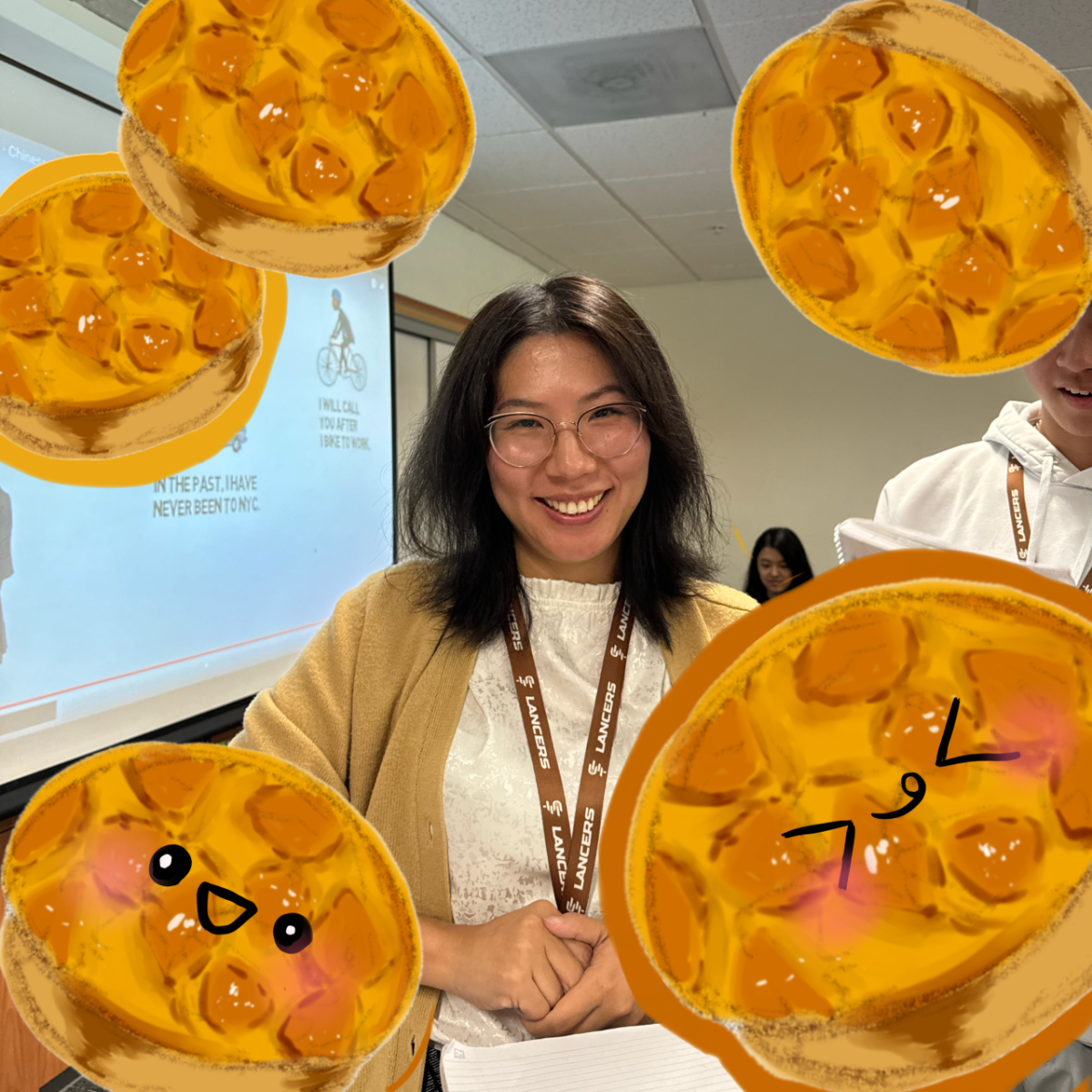In AP English Language class last year, I remember how Ms. Sherrard talked frequently about her latest baking adventures. After my last experience baking egg custard pie for Ms. Yang, I was excited to practice some different baking techniques. When I asked Ms. Sherrard what I could make for her, she chose cinnamon swirl bread. At first, I was imagining a cinnamon bread similar to Greenlee’s Cinnamon Loaf, a Bay Area classic. However, when Ms. Sherrard sent me her recipe, I realized that her version of cinnamon swirl bread differed from what I had imagined. Essentially, the bread is a standard butter-enriched loaf with a subtle cinnamon swirl in the middle. The swirl is made from rolling the dough into a spiral before its second proof, or rise. The tricky part of baking bread is that yeast is very sensitive; if the temperature is too hot, the yeast will die, and if it’s too cold, the yeast won’t activate at all. Luckily, Ms. Sherrard assured me that “this recipe is actually really beginner-friendly.”
Like practically every recipe, cinnamon swirl bread has conflicting stories about its origin. One theory claims that cinnamon swirl bread is a simple version of the popular Elizabethan dessert, raisin bread—just without the raisins. Another theory is that cinnamon bread might be a variation of cinnamon rolls, a 17th-century Scandinavian recipe popularized by Swedish immigrants (and IKEA). However, the most interesting of all theories revolves around a famous American writer whose works are taught in Saint Francis classrooms. Often referred to as the father of transcendentalism, Henry David Thoreau is also the father to something just as revolutionary—cinnamon raisin bread. According to legend, Thoreau became famous around Concord, Massachusetts for his raisin bread and his alleged tendency to steal random pies off windowsills around his neighborhood. Fortunately for Thoreau’s reputation, historians have largely disproved the latter theory.
Ms. Sherrard was kind enough to include some tips to make the process run smoothly; she mentioned that using regular milk instead of buttermilk made the dough looser and thus harder to work with, so I made a quick buttermilk substitute using one tablespoon of lemon juice per cup of milk. To start on the dough, I whisked together the correct amount of flour, yeast, salt, and sugar. Meanwhile, I mixed boiling water, room temperature water, the buttermilk substitute, and melted butter. I then made a small well in the flour mixture to add the liquid in and gradually mixed the batter, alternating between using a wooden spoon and my hands. After a few minutes, the mixture had a very sticky consistency, so it was time to leave the dough in a warm place to proof. After around an hour and a half, I noticed that the bread dough had doubled in size.
However, the dough was still pretty wet and difficult to work with, so I kneaded in a bit more flour to make it easier to work with. After forming two equal balls of dough, I let it rest for 15 minutes. At this point, I had already made the egg wash and a simple filling with cinnamon and sugar. After 15 minutes, I tried to gently stretch out the dough, but resorted to a trusty rolling pin to ensure the rectangular shape desired to fit the width of the baking pan. I spread a layer of the egg wash and sprinkled the cinnamon sugar evenly throughout the rectangle of dough. Finally, I rolled the dough into a cylinder so that when cut open, a spiral-like shape of cinnamon would appear. After baking for around forty minutes, the bread came out golden brown and quite fluffy.
When I met up with Ms. Sherrard during lunch, I was so happy she enjoyed my cinnamon swirl bread. Reflecting on why she chose this dessert, Ms. Sherrard told me: “My husband’s grandmother used to make cinnamon swirl bread for him growing up. She is no longer with us, and my husband was nostalgic about it, so I learned how to make this recipe.” After hearing her review, I asked what I could do to improve for next time; she responded quickly, “make it into French toast!” Luckily for me, the recipe yielded two loaves, meaning I had plenty left to make French toast the next morning. Overall, I recommend this recipe for anyone craving a delicious treat or a beginner learning to make bread for the first time.










































































